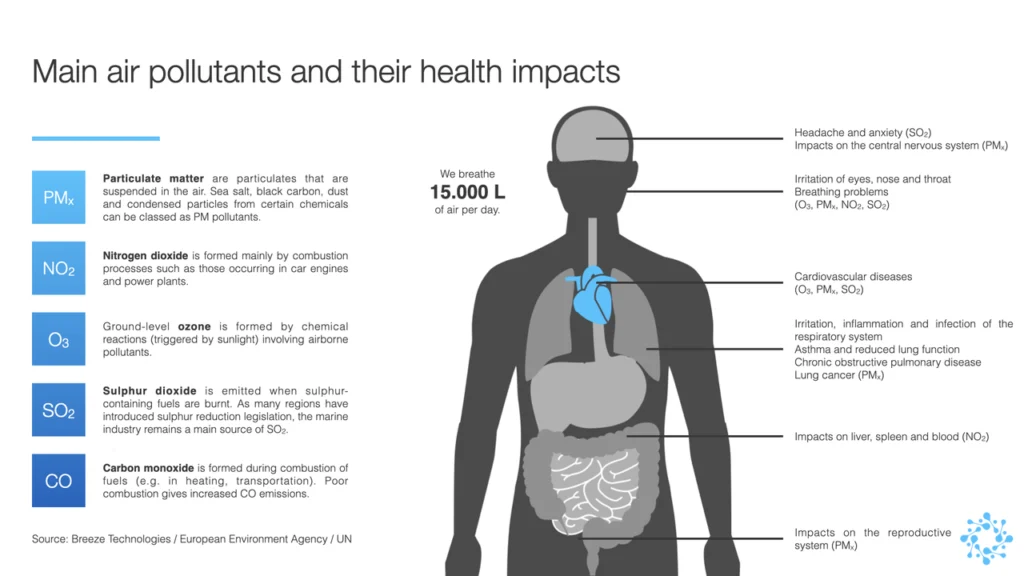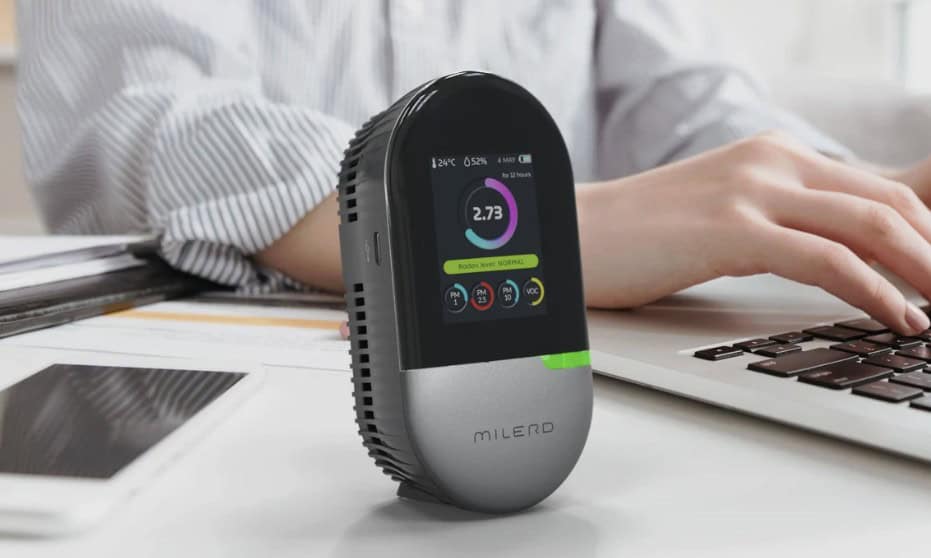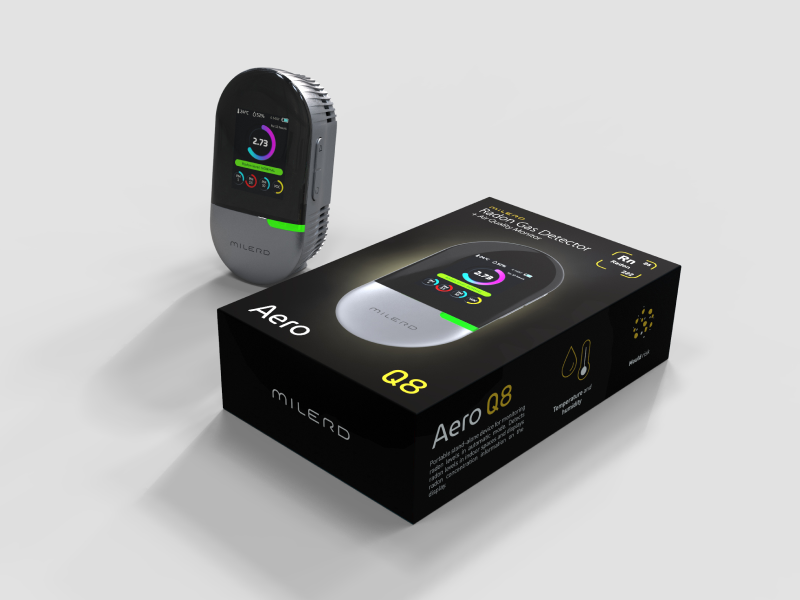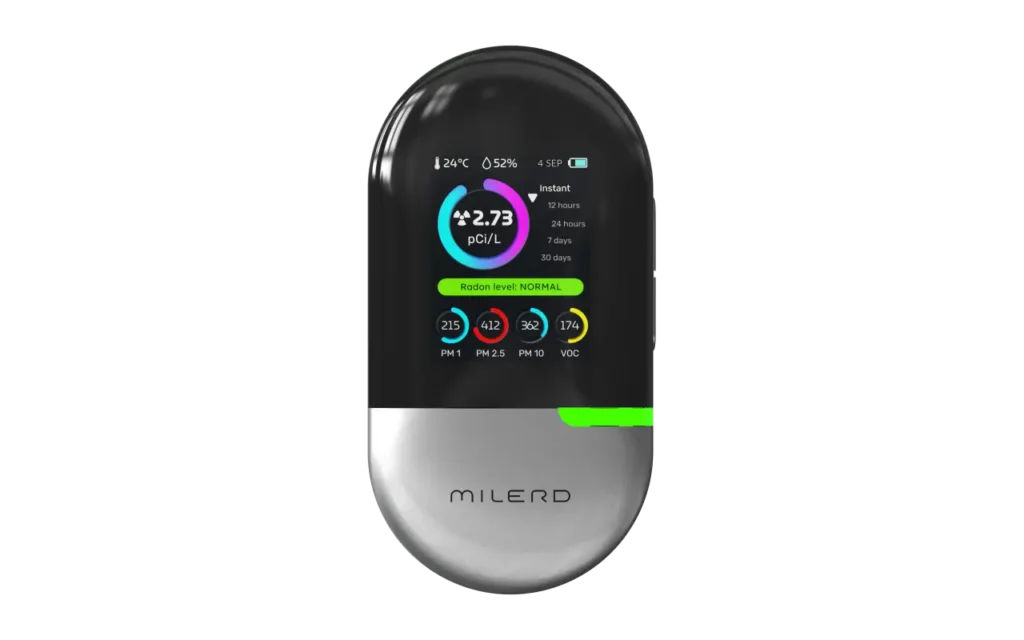The most important thing for our health and well-being is air quality. Air pollution is one of the most serious threats to humankind, resulting in different respiratory diseases, cardiovascular problems, and other serious illnesses. Urbanization and industrialization processes are gaining momentum, with more cars appearing on the roads, thus making air quality management a necessity.
Modern high-tech analyzers can accurately determine the content of the atmosphere. By recognizing and quantifying materials such as carbon monoxide, ozone, nitrogen dioxide, and fine particulate matter, this equipment can rapidly clean the air. This prevents people from damaging their health and aids in making neighborhoods better for living in.
Key Takeaways
Air pollution is not just an environmental issue but a widespread health menace, leading to respiratory diseases, exacerbated allergies, and even cardiovascular problems. Recognizing these risks is crucial for both personal health and community well-being.
State-of-the-art air quality analyzers can detect harmful pollutants like carbon monoxide, ozone, and particulate matter. These devices are pivotal in not just measuring but responding to air quality issues, ensuring safer environments.
Poor air quality affects more than just health; it impacts the economy through increased healthcare costs and lowers agricultural yields. It also intensifies global warming, demonstrating how air pollution ties into broader ecological and economic challenges.
From homes to industrial settings, air quality analyzers provide crucial data to manage and improve the air we breathe. Investing in these tools can lead to notable improvements in public health and productivity while contributing to environmental conservation.
Table of Contents
The Importance of Monitoring Air Quality
Air quality monitoring is the foundation of human health and well-being. Illnesses caused by the pollution of air include:
Different airborne substances, including PM2.5, PM10, SO2, and O3, can trigger asthma attacks that make respiratory issues worse. It is a polluted environment that exacerbates ailments such as asthma and COPD by reducing lung function gradually and increasing vulnerability to infections of the respiratory tract. Additionally, air pollutants can increase sensitivity or worsen allergies, resulting in elevated levels of pollen, chemical irritants, and mold spores in our surroundings.

This heightened pollution contributes to a rise in allergy symptoms and the prevalence of new allergies. Additionally, they harm an individual’s cardiovascular health through carbon monoxide, nitrogen dioxide, and fine particles, which increase the chances of heart attack, among others, when exposed for too long.
Air pollution may cause inflammation, leading to thrombosis or other vascular problems.
Environmental and Economic Consequences
At present, air pollution is among the most significant ecological concerns. It has far-reaching implications for the natural world and the economy. It is a serious issue that should be given due importance since it affects all spheres of life.
How polluted air affects the environment:
- Global warming and the greenhouse effect:
- One example of this is how greenhouse gasses like carbon dioxide and methane increase the greenhouse effect, causing global warming.
- Several cases show that pollutants such as carbon dioxide and methane contribute to enhancing the greenhouse effect, thereby leading to global warming.
- For example, two major pollutants, carbon dioxide and methane, increase the greenhouse effect, leading to global warming.
- Smog and deteriorating air quality:
- In some localities, smog worsens the air’s state caused by ozone and such contaminants like particles. Therefore, plants become hurt, their growth and output becomes reduced, and biodiversity suffers in return.
- Economic implications for society:
- The price of good health is very high. It takes a lot of money to treat and ward off diseases caused by air pollution. Besides, increased hospital visits and admissions put pressure on healthcare systems, leading to reduced productivity through sick-offs.
- Agricultural losses make matters worse. A decline in soil and air quality leads to lower crop yields. Moreover, acid rain causes plant damage, and smog worsens food insecurity, making farmers lose incomes while food prices shoot up, adversely affecting the economy. The costs involved in environmental clean-up and restoration are increasing.
- Significant financial investments are required for pollution control programs and ecosystem rehabilitation. Pollution levels can also be reduced if cleaner technology is funded towards alternative energy sources.
- Financial commitment should be consistent when it comes to rehabilitating ecosystems as well as dealing with effects of climate change that occurs over an extended period of time.
Introducing Advanced Air Quality Analyzers
Accurate and reliable air quality monitoring is significantly dependent on technology. One striking example of such innovations is the multifunctional radon gas analyzer air quality device. Reliable indoor air quality monitoring solutions are provided by this device, which combines advanced sensor technology with ease of use.

Sensors for particle and gas detection:
- The use of sensitive sensors is critical to reacting to occasional air quality fluctuations and providing dependable readings even when contaminant levels are low.
Multifunctional sensors:
- The integration of various sensors in one device allows for the simultaneous measurement of several parameters, such as humidity, temperature, and gas levels.
- This allows for a more extensive analysis of air quality and the identification of connections among various factors.
Automation and Alerts
- Modern Milerd analyzers are equipped with automatic warning systems. When permissible concentrations of pollutants are exceeded, the devices provide text, light, and sound signals.
- Automation assists in fast responding to degrading air quality and taking the necessary measures to improve it.
Key Features and Benefits
- RAD7 is an analyzer of radon gas with numerous functions that make it suitable for indoor use. Milerd Aero Q4 is a device designed to measure indoor radon levels. The presence of this radioactive gas in high volumes can be detrimental to human health. The unit measures long- and short-term concentrations, thus allowing one to obtain extensive information about the atmosphere.
- Measurements for other parameters. In addition to radon, the Aero Q4 also measures humidity and temperature levels, which are useful for observing mold risks. A comprehensive approach to measuring enables maintaining favorable indoor conditions and preventing harmful factors.
- Ease of operation and automated notifications. Aero Q4 is easy to handle. If the concentration level exceeds established limits for radon, the device will issue warnings automatically, enabling prompt response in case of danger. The gadget follows daily statistics throughout 365 days, thus providing all data concerning trends in air quality over time.
- Design compactness and simple mounting solutions. The instrument’s elegance and miniaturization mean that it fits into any modern interior smoothly without covering a lot of space. It also has a wall-mount hole at its back, making it applicable for different settings where ease of installation and use is concerned.
Applications of Air Quality Analyzers
Air quality analyzers are essential in numerous areas of our lives, ranging from conditions at home to industrial and environmental monitoring. These devices help ensure that the air is clean and safe for everyone’s health by identifying and regulating the levels of pollution.

Residential Use
Identification of household pollutants:
- The fine particles of dust (PM2.5 and PM10) can cause allergies and impair the breathing system – these are things that their analyzers can detect.
- Humidity levels and temperature conditions, which promote mold growth, are some of the parameters that their gadgets measure to help identify it.
- These machines have sensors for detecting volatile organic compounds released by different household products, enabling us to control their concentration in a room.
Commercial and Industrial Settings
Pollution control:
- Analyzers in office buildings and businesses help to maintain optimal air quality that aids employee productivity as well as health.
- In industry, machines monitor emissions of carbon monoxide, nitrogen dioxide, and volatile organic compounds.
Environmental Monitoring
Tracking air quality in cities:
- In urban areas, air pollution levels are monitored by installers for continuous monitoring purposes so that the main causes of pollution can be identified and the impact on public health assessed.
- This information informs the public about the current state of the air and actions to be taken to improve it.
Embracing Air Quality Analyzers for a Healthier Future
It is worth noting that air quality analyzers are important for protecting human health and the environment. They can be utilized to find issues like dust, spores, and chemicals in gas ahead of time, thus improving air quality. For example, they reduce respiratory diseases in homes, promote productivity among workers in commercial buildings, and even improve environmental conditions around cities and in natural areas.

Investing in Air Quality Technology
Obtaining contemporary air quality analyzers contributes to long-term health and well-being. These devices help a healthier plus safer surroundings. Buy air quality gauges and take action to ensure clean air in your houses, offices, and environment.

